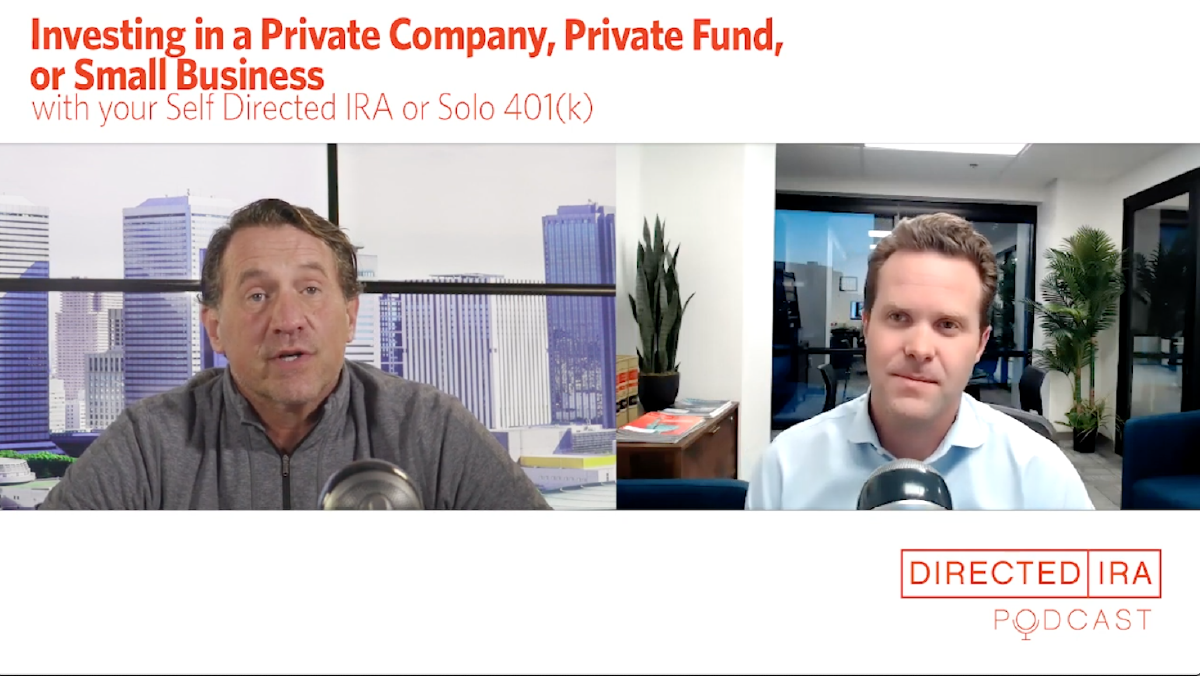Invest in Private Companies/Funds/REITs/Equity
Self-Direct Your IRA. Invest in What You Know.
Take Control of Your Retirement™.
4 Key Points To Consider When Investing in Private Companies & Funds
1: Private Company & Funds
An IRA can own private company stock or private funds. This can be LLC interests, LP interests, and C-Corp Stock. IRAs do not qualify as s-corp shareholders and therefore they cannot own s-corporation stock.
2: Gain Control
All subscription documents, stock certificates, and company records must vest the ownership of the IRA as Directed Trust Company FBO Customer Name IRA. Shares paid by IRA cannot be held in the IRA owner’s personal name.
3: UBIT
If the company is a pass-through (e.g. LLC) and receives ordinary income (for goods and services) then the IRA may be subject to UBTI tax. If the income is investment income then UBIT generally doesn’t apply.
4: 50% Rule
If disqualified persons (e.g. IRA owner, certain family) own 50% of more of an existing company, than the IRA cannot purchase shares or units from the Company.
Read Articles on How to Invest Your IRA in Private Companies and Funds
Self-Directed IRAs can invest in private companies,
private funds, and private REITs.
How to Fund Your Start-Up with Self-Directed IRA Investors
There are 28 trillion dollars in retirement plans in the United States….


UBIT Tax and Self-Directed IRAs: Three Key Tips Every Investor Should Know
Unrelated Business Income Tax (“UBIT”) is often misunderstood by self-directed IRA investors and their professional advisors….
Episode 6: Investing in a Private Company, Private Fund, or Small Business
Tax attorneys Mat Sorensen and Mark Kohler outline how self-directed IRAs and solo 401(k)s can invest in private funds and small businesses…..
